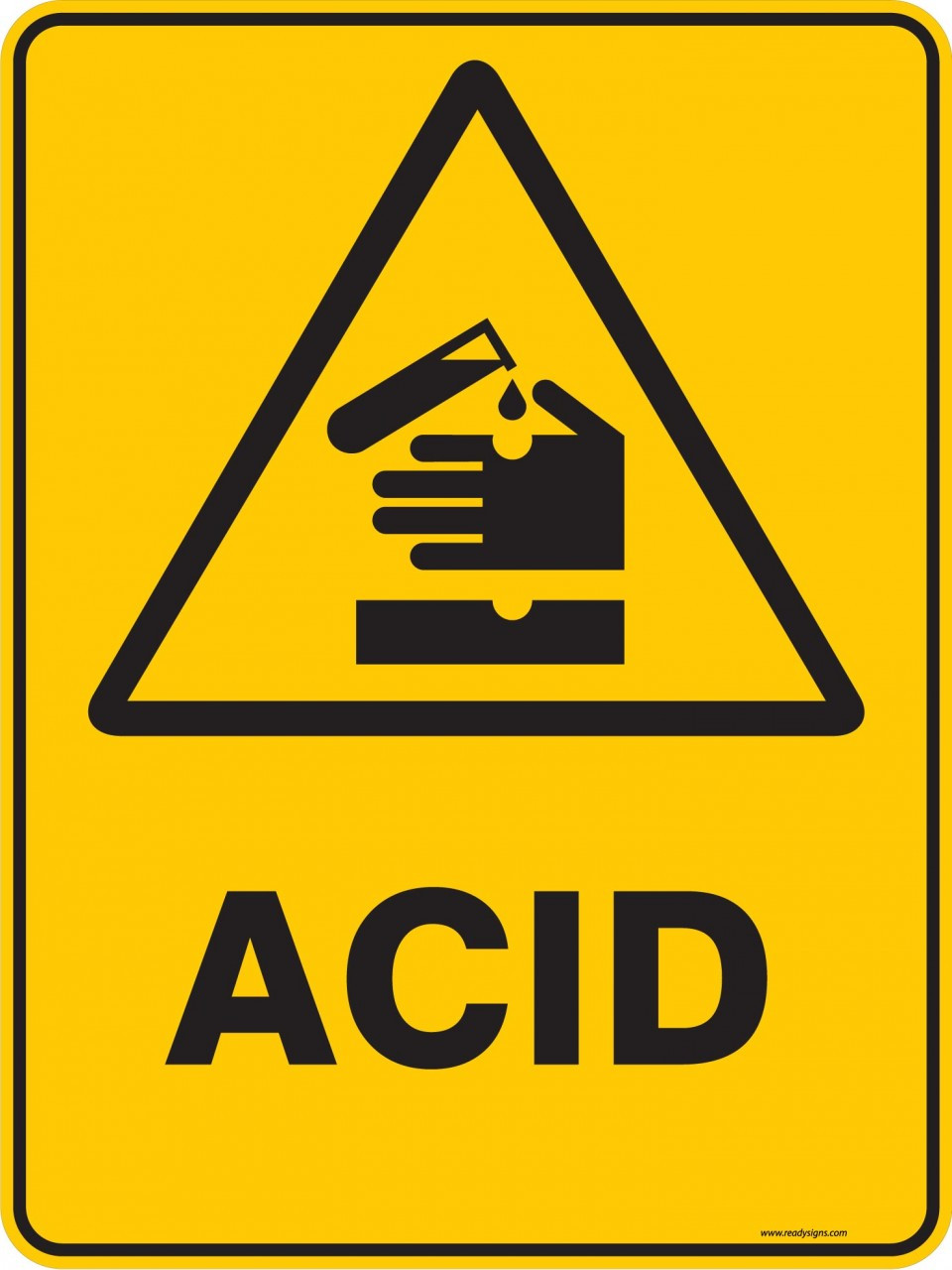As best as I can tell, Corrosion works thus:
- For every 5 points of basic (rolled) damage, the target's DR is reduced by 1.
- If a corrosive element continuously affects the same spot of certain materials, such as wood and stone, it treats it as Ablative (this is true of Burning too).
- If you get hit in the face with Corrosive damage, you take 1.5x damage.
- Acid: this deals 1d-3 if you get splashed with it, and 1d-1 if you're immersed in it.
- Alkahest: not a "real world" material, but still a standard one from Dungeon Fantasy. It deals 1d on a splash, and 2d-1 if you immerse yourself in it.
- Nanobots. Devourers deal 1d(2) corrosion and disassemblers deal 1d-2(10) corrosion.
- Disintegrators (and similar effects) deal whatever damage they feel like.
Acid deals 1, 1, 1, 1, 2 and 3 points of damage on a splash and will never reduce DR. It is useless against any armor that its DR 3+, especially if sealed (ie, all Ultra Tech armor worth discussing). If you swim through acid, it will deal 1, 1, 2, 3, 4, 5 damage, which means you have a one-in-six chance of losing one point of DR.
Alkahest is better, dealing 1-6 on a splash (taking off 1 DR on a roll of 5 or 6, or 1/3 the time), while swimming in the stuff inflicts 1-11 damage (6 on average), which means most rolls will take off at least 1 point of DR and possibly 2, which means your armor will be dissolved within seconds.
It's nanobots where it starts to get weird. Like, what benefit does armor divisor even provide to such low damage totals? Consider the dreaded disassembler: it will deal 1, 1, 1, 2, 3 and 4, which will never reduce DR, but it will inflict 1 point of damage against DR 9 or less always, 19 or less on a roll of 4+ and 29 or less on a roll of 5+ and and against 39 or less on a roll of 6. This is TL 11, so a typical opponent might be wearing a monocrys tac suit which is DR 20, so you're looking at 1-2 points of damage at most... but what does that even mean? Did they chew through the armor? Did it damage the seal? It says only sealed DR will protect against it, so when is it no longer considered sealed? I've been hunting over books for rules on Sealed and what it takes to break it (After all, we have rules for armor patches) when I came across this little gem:
Sealed: Impervious to penetration by liquids and gases. This corresponds to the Sealed advantage (p. B82). It prevents all harm from noncorrosive bioweapons, chemicals, and nano, as well as ordinary rust and waterlogging -UT 171So, uh, does sealed armor protect against "corrosive nano" like disassemblers or not? Either it doesn't at all, in which case, why does it say that "only sealed armor protects against it?" Does it protect fully against it unless the seal is broken? If so, at what point is the seal broken? The armor patch rules seem to imply if any damage penetrates it. We also have armor damage rules, but only in an LT companion, which obviously doesn't cover sealed armor as none existed in LT periods. Or does it protect until all anti-corrosion DR has been dissolved, in which case, it'll never be penetrated.
Upgraded Corrosion
I wonder if the intent was to make disassembler 'more corrosive" than, say, devourer or acid. But if that's the case, we should buff the Corrosion effect.
We actually have a version of improved corrosion in Powers: the Weird, and it stems from a post here, which creates some interesting possibilities. The core recipe is: Corrosion + Corrosion (No Wounding -50%). Thus:
- Basic Corrosion deals 1-6 damage, and dissolves 1 DR on a roll of 5 or 6
- One extra "non-wounding" die of Corrosion (equivalent to a +50% modifier) would double the corrosive effect. You would lose 1 DR on a roll of 3 or 4, and 2 DR on 5 or 6.
- two extra "non-wounded" dice of Corrosion (equivalent to a +100%) modifier would triple the corrosive effect. You would lose 1 DR on a roll of 2 or 3, and two DR on a 4, and three DR on a 5 or 6.
- three extra "non-wounding" dice of Corrosion (equivalent to +150% modifier) would quadruple the corrosive effect. You would lose 1 DR on a roll of 2, 2 DR on a roll of 3, 3 DR on a roll of 4, 4 DR on a roll of 5-6.
- four extra "non-wounding" dice of Corrosion (+200% modifier, the one from the Weird) multiplies corrosion by 5 or, more simply, subtracts 1 DR per point of damage inflicted.
- +50% intensified corrosion means that the corrosion effect subtracts 1 DR per three damage dealt (more or less).
- +100% intensified corrosion means the corrosion effect subtracts 1 DR per two damage dealt (more or less).
- +150% intensified corrosion gets difficult to measure and probably best to skip (I think it works out to 2/3 DR removed per damage dealt)
- +200% works as the version in Powers: the Weird.
But as interesting an idea as that is as an alternative to Armor Divisors for Corrosive Damage, I'm still a little lost on exactly how corrosion is meant to interact with sealed vacc suits, and how armor divisors are meant to work on corrosive damage with sealed armor, and I can't seem to find anything on it.

I read it that the DR loss is from cumulative corrosion damage. So, this attack does 1 point. Attack B does 3 points. Attack C does 1 point and removes a point of DR. Presumably, all three attacks affect the same hit location or general area, of course.
ReplyDelete